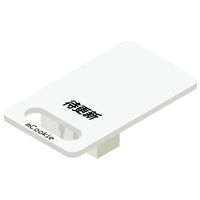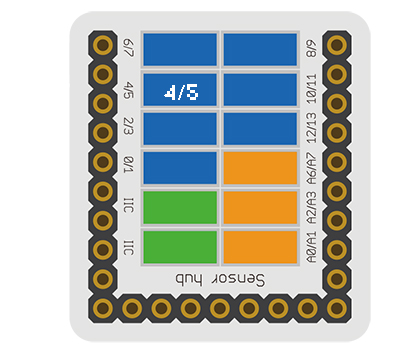Difference between revisions of "Sensor-Dust"
From Microduino Wiki
| (5 intermediate revisions by 2 users not shown) | |||
| Line 3: | Line 3: | ||
|- | |- | ||
| | | | ||
| − | [[File: Microduino-Dust.jpg| | + | [[File: Microduino-Dust.jpg|200px|thumb|right| Sensor-Dust]] |
The product number of Sensor-Dust is: '''MSDT62''' | The product number of Sensor-Dust is: '''MSDT62''' | ||
| Line 9: | Line 9: | ||
==Sensor Pin Introduction== | ==Sensor Pin Introduction== | ||
| − | {{ | + | {{ST_Pinout |
| − | | | + | |st_name=Dust Sensor |
| − | + | |pin3=Analog Input | |
| − | | | ||
}} | }} | ||
| + | |||
==Features== | ==Features== | ||
*Adopt SHARP GP2Y1010AUOF air quality sensor; | *Adopt SHARP GP2Y1010AUOF air quality sensor; | ||
| Line 19: | Line 19: | ||
==Specification== | ==Specification== | ||
| − | * | + | *Sensor voltage |
| − | * | + | **3.3V~5V working voltage |
| − | *1.27mm-spacing 4Pin | + | |
| − | * | + | *Sensor size |
| + | **Board size: 23.5mm*13mm | ||
| + | **1.27mm-spacing 4Pin connected with sensorhub | ||
| + | **The CAD drawing of the sensor: '''[[File:Sensor_CAD.zip]]''' | ||
| + | |||
| + | *Connection | ||
| + | **This sensor can be connected to the following interfaces: '''D4/D5''' | ||
==Document== | ==Document== | ||
| − | *Schematic: '''[[File: | + | *Schematic diagram: '''[[File: Sensor-Dust.Zip]]''' |
| + | *Main sensor: '''[[File:Sensor-Dust_datasheet.pdf ]]''' | ||
==Development== | ==Development== | ||
| − | + | ===Program Download=== | |
| + | *Download and unzip the program '''[[File:Sensor-Dust_Test.zip]]''' | ||
| − | == | + | ===Programming=== |
| − | + | {{Upload | |
| − | + | |nameA=[[Microduino-Core]], [[Microduino-USBTTL]] | |
| − | + | |nameB=[[Microduino-USBTTL]] | |
| − | + | |boardName=Microduino/mCookie-Core(328p), Atmega328P@16M,5V | |
| + | |fileName=Sensor-Dust Test.ino | ||
| + | }} | ||
| − | + | ===Hardware Setup=== | |
| − | + | *Referring to the following diagram, connect the Sensor-Dust to digital interface D4/D5 of '''[[Microduino-Sensorhub]]'''. | |
| − | + | <br> | |
| − | + | [[file:Microduino-sensorhub_Dust.JPG|thumb|400px|left]] | |
| + | <br style="clear: left"/> | ||
| + | ===Result=== | ||
| + | *After download, open the serial monitor. | ||
| + | *The detected PM2.5 intensity will be printed out in cycle in the serial monitor. | ||
| − | + | ==Application== | |
| − | + | It can be used to detect the air quality and indoor dust and so on. | |
| − | |||
| − | |||
| − | |||
| − | |||
| − | |||
| − | |||
| − | |||
| − | |||
| − | |||
| − | |||
| − | |||
| − | |||
| − | |||
| − | |||
| − | |||
| − | |||
| − | |||
| − | |||
| − | |||
| − | |||
| − | |||
| − | |||
| − | |||
| − | |||
| − | |||
| − | |||
| − | |||
| − | |||
| − | |||
| − | |||
| − | |||
| − | |||
| − | |||
| − | |||
| − | |||
| − | |||
| − | |||
| − | |||
| − | |||
| − | |||
| − | |||
| − | |||
| − | |||
| − | |||
| − | |||
| − | |||
| − | |||
| − | |||
| − | |||
| − | |||
==Purchase== | ==Purchase== | ||
==History== | ==History== | ||
Latest revision as of 23:22, 30 March 2017
| Language: | English • 中文 |
|---|
|
The product number of Sensor-Dust is: MSDT62 Microduino-Dust is a PM2.5 sensor. ContentsSensor Pin Introduction
Features
Specification
Document
DevelopmentProgram Download
Programming
Hardware Setup
Result
ApplicationIt can be used to detect the air quality and indoor dust and so on. Purchase==History== |


